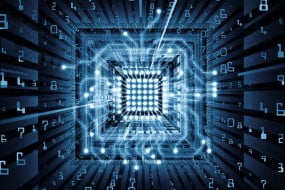Machine Learning and Data Science Using Python – Part 1
Learn Python for Data Science and Machine Learning with this comprehensive course. Explore data structures, control structures, NumPy, Pandas, and more. Perfect for beginner Python developers.
What you’ll learn
- Introduction to Python
- Data Structures in Python
- Control Structures and Functions
- Python for Data Science
- Introduction to NumPy
- Operations on NumPy Arrays
- Introduction to Pandas
- Getting and Cleaning Data
- Data Visualisation in Python
- Introduction to Data Visualisation
- Basics of Visualisation
- Plotting Data Distributions
- Plotting Categorical and Time-Series Data
Show moreShow less
Module-1
Welcome to the Pre-Program Preparatory Content
Session-1:
1) Introduction
2) Preparatory Content Learning Experience
MODULE-2
INTRODUCTION TO PYTHON
Session-1:
Understanding Digital Disruption Course structure
1) Introduction
2) Understanding Primary Actions
3) Understanding es & Important Pointers
Session-2:
Introduction to python
1) Getting Started — Installation
2) Introduction to Jupyter Notebook
The Basics Data Structures in Python
3) Lists
4) Tuples
5) Dictionaries
6) Sets
Session-3:
Control Structures and Functions
1) Introduction
2) If-Elif-Else
3) Loops
4) Comprehensions
5) Functions
6) Map, Filter, and Reduce
7) Summary
Session-4:
Practice Questions
1) Practice Questions I
2) Practice Questions II
Module-3
Python for Data Science
Session-1:
Introduction to NumPy
1) Introduction
2) NumPy Basics
3) Creating NumPy Arrays
4) Structure and Content of Arrays
5) Subset, Slice, Index and Iterate through Arrays
6) Multidimensional Arrays
7) Computation Times in NumPy and Standard Python Lists
8) Summary
Session-2:
Operations on NumPy Arrays
1) Introduction
2) Basic Operations
3) Operations on Arrays
4) Basic Linear Algebra Operations
5) Summary
Session-3:
Introduction to Pandas
1) Introduction
2) Pandas Basics
3) Indexing and Selecting Data
4) Merge and Append
5) Grouping and Summarizing Data frames
6) Lambda function & Pivot tables
7) Summary
Session-4:
Getting and Cleaning Data
1) Introduction
2) Reading Delimited and Relational Databases
3) Reading Data from Websites
4) Getting Data from APIs
5) Reading Data from PDF Files
6) Cleaning Datasets
7) Summary
Session-5:
Practice Questions
1) NumPy Practice Questions
2) Pandas Practice Questions
3) Pandas Practice Questions Solution
Module-4
Session-1:
Vectors and Vector Spaces
1) Introduction to Linear Algebra
2) Vectors: The Basics
3) Vector Operations – The Dot Product
4) Dot Product – Example Application
5) Vector Spaces
6) Summary
Session-2:
Linear Transformations and Matrices
1) Matrices: The Basics
2) Matrix Operations – I
3) Matrix Operations – II
4) Linear Transformations
5) Determinants
6) System of Linear Equations
7) Inverse, Rank, Column and Null Space
8) Least Squares Approximation
9) Summary
Session-3:
Eigenvalues and Eigenvectors
1) Eigenvectors: What Are They?
2) Calculating Eigenvalues and Eigenvectors
3) Eigen decomposition of a Matrix
4) Summary
Session-4:
Multivariable Calculus
Module-5
Session-1:
Introduction to Data Visualisation
1) Introduction: Data Visualisation
2) Visualisations – Some Examples
3) Visualisations – The World of Imagery
4) Understanding Basic Chart Types I
5) Understanding Basic Chart Types II
6) Summary: Data Visualisation
Session-2:
Basics of Visualisation Introduction
1) Data Visualisation Toolkit
2) Components of a Plot
3) Sub-Plots
4) Functionalities of Plots
5) Summary
Session-3:
Plotting Data Distributions Introduction
1) Univariate Distributions
2) Univariate Distributions – Rug Plots
3) Bivariate Distributions
4) Bivariate Distributions – Plotting Pairwise Relationships
5) Summary
Session-4:
Plotting Categorical and Time-Series Data
1) Introduction
2) Plotting Distributions Across Categories
3) Plotting Aggregate Values Across Categories
4) Time Series Data
5) Summary
Session-5:
1) Practice Questions I
2) Practice Questions II
Who this course is for:
- Beginner Python developers curious about Data Science and Machine Learning
User Reviews
Be the first to review “Machine Learning and Data Science Using Python – Part 1”
You must be logged in to post a review.







There are no reviews yet.